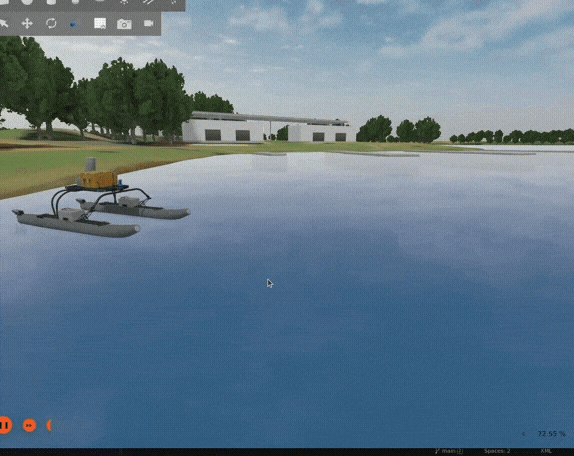-
Notifications
You must be signed in to change notification settings - Fork 188
New issue
Have a question about this project? Sign up for a free GitHub account to open an issue and contact its maintainers and the community.
By clicking “Sign up for GitHub”, you agree to our terms of service and privacy statement. We’ll occasionally send you account related emails.
Already on GitHub? Sign in to your account
Bouncing buoys in perception task #689
Comments
|
Hints:
|
|
Hey,
This one performed better than the values from the main and the case where spawn from a negative z
I tried four different configurations(the original value of drag for round buoys is 25): With all the above observations, the dynamics of waves with drag forces are not working as we require. It is very wierd to see that orange buoys, when raised from below, experience good enough drag, but it is not the case with black buoys even if the drag coefficient is set at 150. For the purpose of finding the best set of parameters:
|
|
Edit: drag40_radius0.18.mp4perception_task1 with updated parameters(drag coefficient 75, reduce geometry to 0.21 from the original value of 0.25): link perception1.mp4I think the second configuration is better as it reduces the velocity of the round buoy with just one oscillation, and we still see a major chunk of the sphere. Let me know your thoughts. I will then set the values accordingly. |
|
Thanks for the detailed analysis, this looks like a great improvement! Let's go with the second configuration then. |








@tejalbarnwal Reports that buoys dropped from just above the surface in the perception task exhibit strange behavior, causing them to bounce off the surface of the water. See this video.
The text was updated successfully, but these errors were encountered: